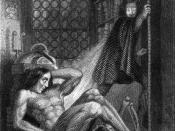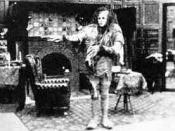Three Main Themes In Frankenstein
Mary Shelley illustrates many important themes in her famous novel Frankenstein. She presents these themes through the characters and their actions. Three of the most important themes in the novel are birth and creation should be left to God, alienation leads to distress, and the love of a family is always there.
One of the novels' most outstanding themes is birth and creation should be left to God. The main character, Victor Frankenstein, succeeds in creating a 'human' life form. In doing this, Frankenstein has taken over the role of God. Shelley conveys to the reader that Frankenstein has used his 'workshop of filthy creation' (33) as a 'womb'. At one point, Frankenstein says, 'winter, spring, and summer passed away during my labours' (34). The length of these three seasons is nine months, representing the time a natural human baby takes to be formed in its mother's womb.
When he finally 'births' his creation, he is horrified and abandons it. The monster, after many undesirable encounters with humans, becomes insane and embarks on a killing spree of Victor's friends and family. This suggests that Victor should never have attempted to play God's role, as his being was not even close to being deemed as perfect as God's 'Adam'. Victor should have left God's role in birth and creation alone, as it is something that the human race does not have the knowledge or power to control. This is how the theme birth and creation should be left to god is shown by the author.
Another theme that becomes evident in the novel is alienation leads to distress. Victor is one character who is alienated from others. This is due to his desire for knowledge, and the vast amount of time in which he spends...



Mediocre
great for reference to find values, but poorly written and structured.
2 out of 2 people found this comment useful.